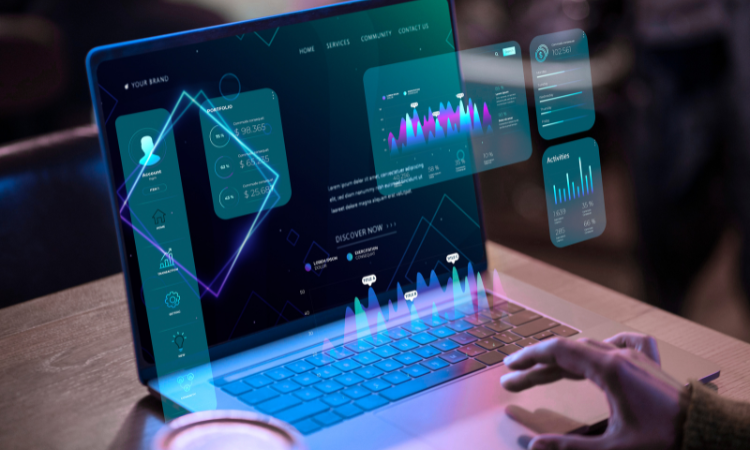Customer feedback is everywhere—pouring in from surveys, support chats, social media, review platforms, and even interview transcripts. It’s raw, emotional, and full of nuance. But here’s the catch: most of it gets skimmed, tagged, or oversimplified. The reality? Qualitative data has never been more valuable or more, underutilized.
Manual analysis can’t keep up. And traditional keyword-based thematic analysis tools often miss the deeper story behind the words. That’s where AI-powered thematic analysis changes everything.
By blending natural language processing with advanced large language models, AI can now dig through mountains of unstructured feedback to surface overarching themes, sentiment patterns, and actionable insights, in minutes, not weeks. It doesn’t just support thematic analysis; it streamlines it, scales it, and sharpens it. AI Thematic analysis isn’t just about speed—it’s about finally understanding what your customers are really saying.
In this blog, we’ll explore why AI is now essential for thematic analysis, how it’s evolved from basic machine learning to large language models, and what makes modern tools a must-have. You’ll also learn what to look for in AI-powered software to turn qualitative data into clear, actionable insights fast. Let's get started!
TL;DR
-
Manual feedback analysis just can’t keep up with today’s flood of customer input across surveys, chats, reviews, and more and legacy keyword tools often miss the bigger picture.
-
AI-powered thematic analysis solves this by surfacing not just what customers are saying, but why they’re saying it, how they feel, and what to do about it.
-
AI has evolved from basic machine learning to LLMs like GPT, enabling dynamic theme discovery, multilingual analysis, sentiment detection, and root-cause insights in minutes.
-
Compared to manual or legacy tools, AI brings unmatched speed, granularity, consistency, and real-time visibility plus frees up analysts to focus on strategy over tagging.
-
The best AI tools offer real-time omnichannel ingestion, explainable outputs, multilingual understanding, compliance guardrails, and integration-friendly APIs.
-
CX teams across industries are already seeing faster churn detection, improved onboarding, and better product prioritization with AI-driven analysis.
-
To get the most out of AI, start small with a high-impact channel, tie goals to KPIs, retrain with feedback loops, and integrate insights into your team’s daily workflow.
-
Zonka Feedback’s AI Feedback Intelligence makes all of this effortless with real-time theme and emotion detection, multilingual context, hybrid tagging, and role-based dashboards. You can get early access to its AI suite or schedule a demo to start improving customer experience.
Eliminate Guesswork with AI-Driven Thematic Analysis📈
Prioritize what matters and drive action in real-time. Turn qualitative feedback into measurable insights using Zonka Feedback's AI-powered Thematic Analysis.

Why AI-Powered Thematic Analysis is Important?
Let’s be honest—traditional approaches to thematic analysis were never built for the world we live in now. Back when feedback came in neat rows from focus groups or a few open-ended questions, manual analysis made sense. Teams had time to read through interview transcripts, tag qualitative data, and surface themes manually. But fast forward to today’s reality—and it’s a different ball game.
Here’s what’s changed:
-
Feedback is now multichannel and nonstop. From in-app surveys to web pages, email threads, social media comments, and support tickets—feedback comes in fast and rarely in one format.
-
Customer language is messier. Think sarcasm, emojis, broken grammar, multiple languages, and emotional nuance. Human researchers—and even older analysis tools—struggle to keep up.
-
Business timelines have shrunk. Waiting days (or weeks) to interpret patterns means missed opportunities, slower response times, and preventable churn.
The stakes? Higher than ever.
According to Deloitte, 89% of companies now compete primarily on customer experience, yet only a fraction are analyzing their unstructured feedback in a meaningful way.
Our findings in AI in Feedback Analytics Research Report shows that 87% of teams still rely on manual verbatim review—exactly the bottleneck AI-driven thematic analysis removes. AI doesn’t just speed up the thematic analysis process, it transforms it. With help from AI algorithms, businesses can now:
-
Detect overarching themes across thousands of responses instantly
-
Run sentiment analysis to understand not just what’s said, but how customers feel
-
Surface identified themes that go beyond what humans may notice
-
Handle sensitive information securely and at scale
-
Process diverse data types (voice transcripts, survey responses, emails) in one streamlined flow
And perhaps most importantly—AI enables deeper insight from every corner of your data, without burning out your research team or compromising on quality.
Modern CX and Insights teams don’t need to choose between speed and depth anymore. With AI-powered thematic analysis, they get both along with clarity, consistency, and a direct line to what their customers actually mean.
The Evolution of AI in Thematic Analysis
AI in thematic analysis didn’t appear overnight. It’s gone through major transformations—each one shaping how organizations handle qualitative data analysis and the speed and depth of the insights they’re able to unlock. Let’s take a quick walk through this evolution and why it matters for qualitative research teams today.
Phase 1: Machine Learning Classifiers — Rules, Rigid Labels, and Limited Reach
In the early days, machine learning made its debut in thematic analysis through models like Naïve Bayes and Support Vector Machines (SVM). These tools brought automation to a manual world. Instead of combing through interview transcripts or survey responses line by line, teams could use training data to teach models how to spot common terms or phrases.
But there was a catch—these models could only work within fixed taxonomies. So, if you told the system to look for “delivery issues” or “pricing complaints,” that’s all it could find. Any nuance, sarcasm, or emerging themes? Completely invisible.
Think of it as setting traps for known problems—but missing the unexpected insights hiding in plain sight.
Phase 2: NLP & Deep Learning — More Context, Still Constrained
As data volumes grew and customer language became more complex, the need for more intelligent systems emerged. Enter natural language processing (NLP) and deep learning.
This phase introduced models like Word2Vec and BERT, short for Bidirectional Encoder Representations from Transformers, developed by Google. Unlike earlier tools, BERT could read text in both directions, making it far better at understanding meaning in context.
For example, it could distinguish between “charge” in charge the customer vs charge the battery, a huge leap for sentiment analysis and theme identification. It gave thematic analysis software the ability to detect patterns in tone, phrasing, and intention without relying solely on rigid taxonomies.
Still, there were trade-offs. BERT was task-specific. It needed labeled data and heavy fine-tuning. It couldn’t generate summaries or synthesize feedback across channels or languages. In short, it understood language but it didn’t communicate like a human.
Phase 3: GPT-Era LLMs & Agentic AI — The Game Changer
Then came large language models like GPT-3.5, GPT-4, and now agentic AI systems. These models don’t just understand context, they generate it. They can synthesize textual data across survey responses, focus groups, and interview transcripts and identify overarching themes, explain them, and even recommend next steps.
Here’s how this plays out in practice:
-
A GPT-powered AI thematic analysis tool can analyze 10,000 pieces of feedback in minutes.
-
It doesn’t just tag “bugs” or “pricing issues”, it tells you that users are frustrated with your mobile app crashing after login, and that most of those comments came from Android users in Southeast Asia.
-
And it does all this while preserving sensitive information and giving you actionable insights you can actually use.
While BERT was a powerful step forward, it still needed structured tasks and labeled inputs. GPT and other AI-powered models, by contrast, can adapt on the fly. They don’t just recognize known patterns—they surface new ones. This unlocks a completely different thematic analysis workflow, where your analysis tools think more like humans but work 100x faster.
With AI thematic analysis, you can analyze feedback across languages, platforms, and formats, all while preserving sensitive information and maintaining context. And you can do it with just a few clicks.
Advantages of AI Thematic Analysis Over Manual or Legacy Methods
Let’s be honest manual coding and legacy thematic analysis software might have served their purpose once. But in today’s CX landscape, they don’t just slow you down, they hold you back.
If your team is still buried in spreadsheets, tagging qualitative data comment by comment, or relying on old-school analysis tools that can’t read beyond a fixed taxonomy, you’re missing out on richer insight, faster action, and more impact. Here’s how AI-powered thematic analysis in qualitative research changes the game:
1. Speed and Scale That Actually Keep Up
With manual analysis, a single person might take a full day to comb through 200 open-ended survey responses. Now multiply that by 10,000. AI survey tools can analyze that same dataset across multiple data types like interview transcripts, chat logs, and social comments in minutes.
Need to run a monthly deep-dive on all customer feedback across six regions and three languages? AI says: no problem. This kind of scale isn’t just efficient, it’s essential when customers expect real-time responses.
2. Granular Depth You’d Never Catch Manually
AI doesn’t stop at surface-level themes. It identifies sub-themes, maps emotional tone through sentiment analysis, and even traces intent chains like frustration turning into churn risk.
Let’s say a product feedback form includes:
"I loved the new feature at first, but now it keeps glitching, and I’m honestly done waiting for fixes."
A legacy system might just tag this as “feature request.”
But AI picks up on three layers: initial excitement, repeated issue, and risk of churn—all in one go. That’s the kind of deeper insight you can’t afford to miss.
3. Consistency You Can Count On
With human researchers, even experienced ones, interpretation varies. What one person tags as a “support complaint,” another may see as “product issue.”
AI brings standardization. Every piece of textual data is judged against the same rubric, free from fatigue, inconsistency, or subjective drift. That makes your qualitative analysis more reliable, especially when insights are being shared across teams or used to shape strategy.
4. Cost-Effective, Strategic Reallocation of Talent
AI doesn’t replace analysts, it elevates them. Instead of spending hours tagging feedback manually, your team can now focus on storytelling, spotting trends, and collaborating with product or marketing on what to do next. You shift from being a data processor to a decision-driver.
It’s not just automation, it’s transformation.
5. Measurable Impact on Business Outcomes
This is where it really gets exciting. Teams using AI-powered thematic analysis tools report:
-
Faster NPS recovery, because they catch root causes early
-
Lower churn, because they identify dissatisfaction signals before customers walk away
-
Smarter product bets, because decisions are guided by actionable insights grounded in real customer narratives
And yes, they do all of this while improving data privacy, reducing analysis bottlenecks, and freeing up time for further research or experimentation.
What to Look for in an AI Thematic Analysis Tool
Let’s say you’re sold on the value of AI-powered thematic analysis. Great. But not all thematic analysis tools are created equal and when it comes to analyzing qualitative data at scale, the wrong fit can leave you with surface-level insights, compliance risks, or hours wasted reverse-engineering “smart” outputs.
So how do you choose the right tool?
We recommend using a simple lens: Capability → Confidence → Compatibility.
a. Capability: What the Tool Can Do
Modern thematic analysis tools should go beyond basic text analysis or keyword clustering. You need tools that understand nuance, scale with your feedback volume, and adapt to your domain.
Look for:
-
Real-time, omnichannel ingestion of survey responses, interview transcripts, support tickets, web pages, and more
-
A multilingual, domain-adaptable large language model that doesn’t just translate but interprets
-
Advanced theme identification—including sub-themes, sentiment patterns, and emotion detection
For instance, if a customer in Spanish writes, “La app está bien, pero el soporte nunca responde,” a good AI model should classify this under “support dissatisfaction,” not “positive feedback”—even if the first part sounds neutral.
b. Confidence: Trust the Output
Blind trust in AI is a bad idea. You need transparency. Your AI thematic analysis tool should:
-
Provide explainable outputs showing why a theme was assigned and where the data came from
-
Offer confidence scores, so you know how sure the system is before you act on it
-
Protect sensitive information with governance protocols like PII redaction, audit trails, and SOC 2 compliance
These features don’t just make your qualitative research more robust—they also check the box for data privacy and ethical considerations that today’s enterprise teams can’t ignore.
c. Compatibility: Plays Well with Your Ecosystem
The best thematic analysis tools don’t make you change how you work, they integrate with it. Prioritize tools that are:
-
API-first, allowing you to connect easily with CRMs, BI dashboards, helpdesk platforms, and multiple data types
-
Designed for feedback-loop retraining, so your model improves over time with real human input
-
Equipped with a user-friendly interface so cross-functional teams, not just data analysts, can explore insights with just a few clicks
How AI Thematic Analysis Could Transform Teams Like Yours
While every business is different, the challenges many face around feedback analysis are surprisingly similar: too much data, not enough time, and too little clarity on what really matters. Here are a few illustrative scenarios, based on common industry pain points, that show how AI-powered thematic analysis can make a measurable difference.
Retail: Catching the Root Cause Before Returns Pile Up
Imagine a retail brand receiving thousands of survey responses and review comments each month. Customers complain vaguely about sizing, fit, and product quality—but nothing conclusive stands out through manual tagging.
With AI thematic analysis tools, the company runs sentiment and theme identification across all feedback. The system surfaces a consistent issue tied to one supplier’s sizing inconsistencies.
This could help them:
-
Catch the issue early
-
Reduce returns and customer frustration
-
Increase satisfaction across product lines
SaaS: Turning Feedback Fatigue into Onboarding Wins
A fast-scaling SaaS company collects open-text feedback during trials, user onboarding, and customer check-ins. But with a small CX team, manual analysis is slow—and insights often go stale.
With AI-powered thematic analysis software, the team can process interview transcripts, support chats, and textual data weekly. Patterns of confusion around setup steps and unclear tooltips surface immediately.
This could help them:
-
Proactively optimize onboarding flows
-
Reduce drop-offs and support load
-
Improve user activation and retention
Healthcare: Surfacing What Patients Aren’t Saying Directly
A healthcare network captures feedback from discharge forms, digital surveys, and call center notes. While overall satisfaction scores look fine, qualitative data reveals deeper stories—if you know where to look.
By applying sentiment analysis and AI-based theme detection, the hospital uncovers repeated complaints about delays in diagnostics—previously lost in long-form comments.
This could help them:
-
Prioritize operational improvements based on real concerns
-
Increase trust and transparency
-
Boost patient experience metrics
From Insight Chaos to Clarity: A Strategic Roadmap for Adopting AI Thematic Analysis
Let’s be clear: adopting AI-powered thematic analysis isn’t about replacing analysts with robots or plugging in the flashiest analysis software. It’s about reshaping how your organization listens, learns, and acts at scale.
So how do you make the leap from feedback overload to strategic insight engine? Here’s the roadmap high-performing teams follow, not a checklist, but a shift in approach.
1. Identify Business Problems Before Choosing a Thematic Analysis Tool
Let’s be honest—AI for the sake of AI gets you nowhere. Start by asking: What’s broken today that AI can help fix?
Maybe your NPS survey responses are piling up, but no one’s reading the open-ended comments. Or your qualitative data from churned customers is sitting untouched in interview transcripts because the team doesn’t have time to code them.
Now imagine if AI could run sentiment analysis on all that textual data and instantly surface patterns like:
-
“Most frustrated users mention slow setup.”
-
“High-value customers feel ignored after onboarding.”
-
“Wait times during diagnostics are a recurring concern.”
That’s not just data. That’s direction.
2. Start Your AI Thematic Analysis Pilot in a High-Impact Feedback Channel
You don’t need to automate everything at once. In fact, don’t. Instead, pick one high-volume, high-friction area and test AI there. A few great starting points:
Your support inbox (where identified themes are buried in tickets)
-
Exit survey comments from churned users
-
Patient feedback forms in healthcare
-
Product feedback from beta users
Run AI thematic analysis in just that area. Let the results speak for themselves.
💡 Don’t just look at speed. Look at what new deeper insights you’re uncovering and how fast your team can act on them.
3. Reimagine Analyst Roles with AI-Powered Qualitative Data Analysis
Most researchers didn’t get into the field to tag data all day. So let AI handle the repetitive stuff, and let your team shine where it counts.
-
Instead of being buried in manual coding, your team can now:
-
Synthesize qualitative insights into narratives leadership will actually care about
-
Connect themes across multiple sources (focus groups, survey responses, chat logs)
-
Partner with product or CX to translate themes into fixes
This is where the magic happens, when human researchers become strategic storytellers.
4. Integrate AI Analysis Tools Across Your Feedback Ecosystem
It’s not enough to get insights, you’ve got to move them. That’s why your AI thematic analysis tool needs to integrate easily with your other systems. Think:
-
Direct-to-Jira for product bugs
-
Slack alerts when sentiment drops
-
CRM enrichment for account-based insights
And make sure it has a user-friendly interface so your product, support, and ops teams can dig into the insights themselves with just a few clicks.
Build a Sustainable Thematic Analysis Workflow with AI
The first win is just the beginning. The teams that succeed with AI-powered thematic analysis treat it like a capability they’re building over time, not a quick fix. That means:
-
Checking your AI models for bias or blind spots
-
Updating your theme identification logic as products evolve
-
Inviting analysts to challenge and retrain outputs (hello, feedback-loop retraining)
It’s not perfect from day one. But with time, it becomes the smartest member of your team.
How Zonka Feedback Uses AI Thematic Analysis for Better CX Insights?
Zonka Feedback’s AI Feedback Intelligence isn’t just built to support thematic analysis; it’s designed to redefine it. In a world where thousands of survey responses, support tickets, and interview transcripts flow in daily, teams need more than just speed. Zonka Feedback brings clarity, context, and confidence.
Instead of forcing you to build rigid taxonomies or wade through manual analysis, Zonka Feedback applies advanced large language models and natural language processing to instantly identify themes, emotions, and perform intent analysis across every touchpoint. It doesn't just tag comments, it explains why something is a theme, and tells you what to do about it.
1. A Single Lens on Every Customer Voice
“We get feedback from everywhere—how do we make sense of it all?”
Zonka ingests textual data from every channel: survey responses, live chat logs, interview transcripts, email threads, and app store reviews. You don’t need to stitch anything together, its AI does it for you.
For instance, let’s say a spike in delivery issues shows up in WhatsApp chats, CSAT surveys, and app reviews. Zonka groups them under one theme—"delivery delays"—with sentiment scores and real-time impact, giving you a single view of the problem across channels.
2. Root-Cause Detection That Goes Beyond Tagging
“It’s not just what they said—it’s why they said it.” Instead of surface-level tags like “feature issue,” Zonka uncovers intent chains. It connects dots like:
“feature not explained” → “setup confusion” → “trial user churn.”
For instance, if your product team receives 500 feedback entries over two weeks. Instead of just seeing “onboarding issues,” Zonka Feedback reveals the real root cause: users are dropping off after hitting a confusing data import step, backed by real comments and confidence scores.
3. Emotion & Risk Alerts Before It’s Too Late
“If we’d known sooner, we could’ve saved that account.”
Zonka Feedback doesn’t just track sentiment analysis, it reacts to it. When it detects a spike in negative emotion like frustration or betrayal, it sends smart alerts via Slack, Jira, or email.
Say, for instance, after launching a UI update, users begin using phrases like “clunky,” “confusing,” and “going back to the old version.” Zonka Feedback flags this within hours, allowing your team to roll back the change before churn spikes.
4. Feedback Loop Retaining for Continuous Improvement
“Can the AI actually learn from us?” Yes.
Zonka Feedback allows analysts to relabel, merge, or rename themes right in the dashboard. These changes don’t vanish, they’re remembered. Zonka’s AI continuously adapts based on this human-in-the-loop refinement.
For instance, a researcher merges “late delivery” with “shipping issues.” The next time those comments show up—even phrased differently—Zonka Feedback auto-tags them accurately. The more you use it, the sharper it gets.
5. Built-In Multilingual Understanding
“Our customers don’t all speak English. That shouldn’t be a barrier.”
Zonka Feedback analyzes feedback in multiple languages—English, Hindi, French, Spanish, and more—without relying on third-party translators or risking meaning distortion. The AI understands language natively, preserving emotional nuance, cultural context, and intent across every comment.
Whether your business operates across continents or serves multilingual regions within the same country, this thematic analysis tool ensures that every voice of customer is heard and heard accurately. All multilingual insights are unified into a single thematic view, so teams can compare experiences, sentiment, and themes across languages without duplicating effort or compromising clarity.
6. Hybrid Tagging with Business Context
“We love AI, but we still want our own tags.” You get both.
Zonka Feedback blends automatic theme identification with your own taxonomies. Add labels like “KYC delay” or “high-value customer concern” to make themes relevant for your team’s goals.
For instance, you tag complaints from enterprise clients with “Priority Segment.” Zonka tracks themes for that group separately, so you can see what your top-tier customers really think.
7. Attribute-Based Thematic Analysis
“Who’s saying this and does it matter?”
Slice your insights by plan type, location, customer journey stage, or any other attribute. Zonka Feedback shows how qualitative data trends shift by segment. For instance, you discover that “payment failure” is a recurring complaint—but only among users in Latin America using a specific gateway. Now that’s actionable.
8. Trends Over Time, Not Just Snapshots
“Are things getting better or worse?”
Zonka Feedback plots identified themes and sentiment trends over time so you don’t just see what’s happening now, but where it’s headed.
For instance, “Agent rudeness” complaints were declining… until last week, when they suddenly doubled. Zonka spots the uptick and alerts support managers before it becomes a public issue.
9. Cross-Channel Theme Correlation
“Is this issue showing up elsewhere?” Usually, yes.
Zonka Feedback connects feedback across channels so a bug mentioned in app reviews, flagged in support tickets, and mentioned during an onboarding call gets grouped under one insight thread.
For instance, “Unable to reset password” appears in live chat, Zendesk tickets, and app reviews. Zonka Feedback correlates it, visualizes the trend, and shows where it’s peaking.
10. Role-Based Dashboards for Every Team
“Give the right insights to the right people—without overwhelm.”
Zonka Feedback routes themes and insights by function. Product teams see bugs and feature pain points. CX teams see friction and sentiment. Executives see top themes and trendlines.
For instance, your ops lead gets a weekly Slack digest showing top logistics complaints. Meanwhile, the product manager sees “confusing filter design” trending among power users.
Conclusion
The days of skimming over open-ended feedback or wrestling with rigid tagging systems are over. With AI-powered thematic analysis, you’re not just speeding up qualitative data analysis, you’re unlocking richer, deeper, and more reliable insights that drive real change across your customer experience. Whether you're in retail trying to decode review sentiment, in SaaS tracking trial user churn, or in healthcare identifying patient pain points, AI gives you the clarity and scale your team needs to move from reactive to strategic.
Zonka Feedback is an AI insight tool that is built for this next era of insight. From real-time root cause detection and multilingual feedback synthesis to role-based dashboards and feedback-loop retraining, it’s everything your CX team needs out of the box.
Get early access to Zonka’s AI Feedback Intelligence and stay ahead of the curve. Or, if you’re ready to explore how Zonka’s full CXM platform can transform your surveys and feedback workflows, schedule a demo. Because your customers are already speaking, Zonka Feedback can help you finally hear them!











